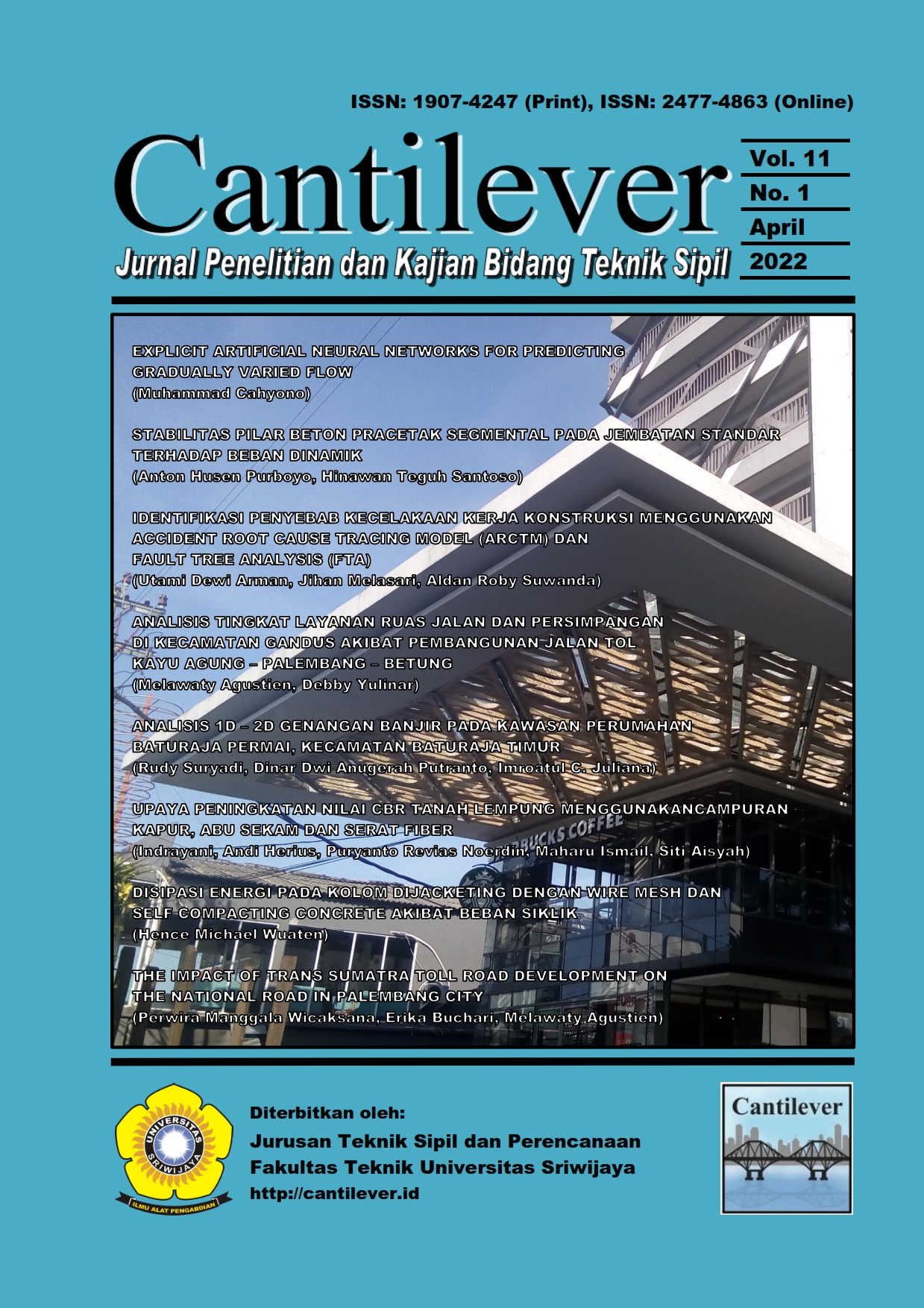The Impact of Trans Sumatera Toll Road Development on The National Road in Palembang City Dampak Pembangunan Jalan Tol Trans Sumatera Terhadap Jalan Nasional di Kota Palembang
Main Article Content
Abstract
The toll road network in Indonesia is growing very rapidly in line with the plan of the Government of the Republic of Indonesia to build 24 toll roads on the island of Sumatra which will connect every provincial capital. The impact of toll road construction is certainly different in each region, and those who feel the greatest impact in the areas closest to them. Toll roads, both existing and planned, cause the development of local roads in the vicinity directly or indirectly. Development of road network systems can affect the movement so that network performance becomes better and increasing road capacity is not the right solution to overcome congestion on the road. This study discusses the impact of the construction of the Trans Sumatra toll road on the national road network in the city of Palembang by using four-step models and a macro simulation program, namely the software PTV Visum. The model reliability test resulted in a determinant coefficient (R2) of 0.7227, which means it represents the existing traffic conditions in the field. The modeling stage is continued to predict the performance of the road network after the Trans Sumatra Toll Road operates. Prediction results show in 2036 there will be a decrease in the level of service with the increase in the V/C Ratio of National Roads that directly access the Trans Sumatra Toll Road. Adding more traffic lanes in 2031 and 2036 on these roads, will significantly improve the performance of the National Road network. The unification of the Trans Sumatra toll gate also helps to increase the level of service on the nearest road.
Downloads
Article Details
Chin, W. W. (1998). The Partial Least Squares Aproach to Structural Equation Modeling. Modern Methods for Business Research, 295, 336.
Joni, A., Muhammad, R. P., & Astri Y.K. (2017). Planning of City Transportation Infrastructure Based on Macro Simulation Model. International Journal on Advanced Science Engineering Information Technology, 7(4), 1262-1267. doi:10.18517/ijaseit.7.4.2444.
Marpaung, G., Soesilowati, E., Rahman, Y., Pangestu, Y., & Wicaksana, T. (2021). Socioeconomy Conditions After The Development of Toll Roads in Salatiga. Economics Development Analysis Journal, 10(1), 86-95. doi: 10.15294/edaj.v10i1.40966
Paramitha, S., Joni, A., & Erika, B. (2019). Analysis of The Needs of Road Network Development in Baturaja City Indonesia Using Macro Simulation Model. International Journal of Scientific and Technology Research, 8(8), 1894-1897.
Puji, D. A. (2020). The Effect of Toll Gate Type on the Queue of Vehicles in Connecting Roads: A case study of Bawen – Yogyakarta Toll Road. Journal of Civil Engineering Forum, 6(1), 1-12. doi:10.22146/jcef.43975.
Siswoyo, M. (2020). The Impact Of Toll Road Development: An Analysis Based on Public Administration Ecology. Journal Of Southwest Jiaotong University, 55(3). doi:10.35741/issn.0258-2724.55.3.53.
Stephen, G., Teemu L., Henry G. O., & Rosa S. (2019). New Road Infrastructure: The Effects on Firms. Journal of Urban Economics, 110, 35-50.
Sukumar, K., & Kara M. K. (2009). Toll Roads in Texas: Traffic and Welfare Impacts. Journal of the Transportation Research Forum, 48(2), 5-22.
Suryo, N., Ahmad M, & Muhammad Z. I. (2018). Analysis of The Effect of Speed Management on Vehicle Queue at Toll Gate Exit in Holiday Period. Jurnal Penelitian Transportasi Darat, 20(1), 33-48.
Turner, D. G., & M. A. (2011). The Fundamental Law of Road Congestion: Evidence From US Cities. American Economic Review, 101 (6), 2616-2652. doi:10.1257/aer.101.6.2616.

This work is licensed under a Creative Commons Attribution-NonCommercial 4.0 International License.
Authors who publish with this journal agree to the following terms:
- Authors retain copyright and grant the journal right of first publication with the work simultaneously licensed under a Creative Commons Attribution-NonCommercial 4.0 International License that allows others to share the work with an acknowledgment of the work's authorship and initial publication in this journal.
- Authors are able to enter into separate, additional contractual arrangements for the non-exclusive distribution of the journal's published version of the work (e.g., post it to an institutional repository or publish it in a book), with an acknowledgment of its initial publication in this journal.
- Authors are permitted and encouraged to post their work online (e.g., in institutional repositories or on their website) prior to and during the submission process, as it can lead to productive exchanges, as well as earlier and greater citation of published work (See The Effect of Open Access).
